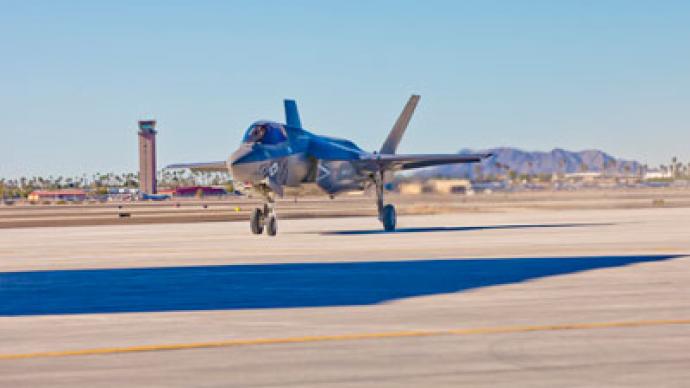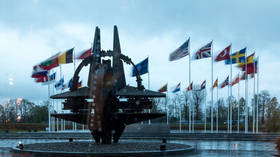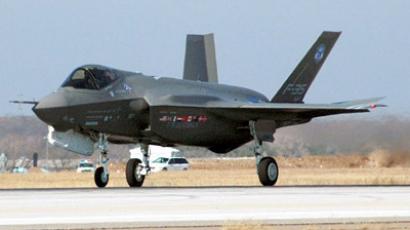Design flaw in 'Lightning II' F-35B jet raises fears of lightning-induced explosions

It’s the world’s most expensive combat aircraft, but don’t expect it to fly in bad weather: The $237-million F-35B has been banned from traveling within 25 miles of a thunderstorm, amid fears that lightning could cause its fuel tank to explode.
The aircraft, which is ironically known as 'Lightning II,' is not permitted to fly in thunderstorms until an oxygen gauge in the fuel tank is redesigned.The findings were disclosed in the Pentagon’s 2012 Annual Operational Test and Evaluation report, which examined 327 defense programs slated for full production. The announcement is a major setback for the combat plane, which is set for use in the US Marine Corps, Navy and Air Force. The planes are also scheduled to fly with Britain’s Royal Navy and Royal Air Force by 2018.Other fears besides a lightning-induced explosion have left engineers worried. A design fault in the fuel tank prevents the jet from rapidly descending to low altitudes. The Pentagon report described both flaws as “unacceptable for combat or combat training.” The F-35B's problems don’t stop there: Attempts to increase the aircraft’s fuel efficiency by reducing its weight have made it more vulnerable to enemy attack – even more so than the aircraft it’s designed to replace, the Telegraph reported.Examinations by the US Air Force and manufacturer Lockheed Martin also discovered possible widespread cracking on the right wing and right engine of the F-35A, and on an area of the F-35B. “All of these discoveries will require mitigation plans and may include redesigning parts and additional weight,” the report said.The aircraft’s supposedly state-of-the-art visor had its own issues last June. The visor is designed to provide pilots with up-to-the-second information about the jet’s every move, but actually provided incorrect data.Critics have dubbed the F-35B a disaster since its inception in the 1990s, when it became the most expensive equipment project ever undertaken by the Pentagon. The total cost of buying, operating and maintaining the planes over the next 30 years is estimated at around $1.5 trillion. That high price tag has given several countries cold feet about the jet. Last week, Canada pulled out of a deal to buy 65 F-35s over fears that the aircraft could be too expensive to run. Italy reduced its purchase to 90 F-35s from an initial 131, and even the US has delayed some of its purchases.But despite the flaws in the F-35B’s fuel tank, the aircraft’s makers remain optimistic."The F-35 is a stealth aircraft and by definition it is less vulnerable than any fourth-generation fighter flying today. We don’t consider this a major issue,” a Lockheed Martin spokesperson told the Telegraph.














